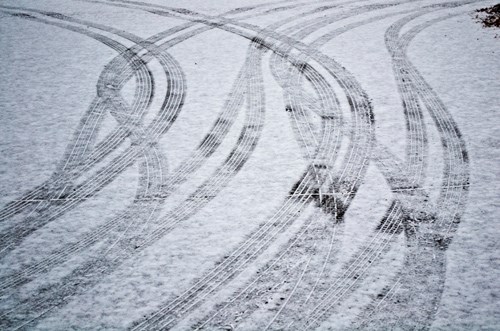With snow and ice now here it is important to remember to prepare for winter driving.
Preparing for winter comes with preparing an emergency kit to be carried in the vehicle. Items to be kept in the trunk includes a shovel, some sand, warning light, extra clothing and footwear, booster cables, matches and a survival candle, extra windshield washer fluid with antifreeze.
Items suggested to carry inside the vehicle include an ice scraper and brush, flashlight, first aid kit, and blanket.
CAA also suggests for individuals to carry a fully charged cell phone in case of emergency.Though these are precautionary items to carry on a trip it is also important to plan ahead. Checking the weather and road conditions before taking to the road are ways to possibly avoid travelling through storms. Or it may help encourage drivers to take extra time to get to and from one's destination according to road conditions.
Cruise control can actually put a vehicle into a skid as it hydroplanes, causing the tires to lose contact with the road surface and accelerate to a greater speed. Reducing power to tires prevents skids, so when wheels continue to spin it increases the chances of losing control of one's vehicle. (www.ama.ab.ca)
According to CAA, snow and ice are more slippery at this time of year with the temperature nearer to 0C than it is at -20C. Black ice is also more likely to be found at temperatures between 4C and -4C. Black ice often forms in shaded areas of highways, bridges, and overpasses. Though it is difficult to tell where black ice is, it is important to watch for black and shiny patches on the highway.
While on the road it is also necessary to leave more space between the vehicle in front of you and your own as stopping takes longer when the roads are slippery with ice and snow.
According to Forensic Dynamics Inc. their Stopping Distance Calculator calculates stopping in snow while travelling 100km/h at 131.22m as opposed to 56.23m on dry asphalt. While travelling at 120km/h, which through The Observer's driving experience is the typical speed on Hwy 13, it takes 188.96m to stop as opposed to 80.98m on dry asphalt.
On ice travelling at 100km/h can result in braking taking 262.45m, while the vehicle can also be put into a skid. At 120km/h it can take up to 377.92m to stop.
If something does happen that results in being trapped in a storm or a snow bank, stay calm. Avoid heavy shoveling in the cold, but do make sure to check the tailpipe and make sure it is not covered by snow.
It is suggested that keeping a window cracked open on the side of the vehicle sheltered from the wind supplies fresh air. Use a survival candle to keep warm as opposed to the vehicle's heater. Staying awake is also important to remain attentive in watching for traffic or searchers and exercising your arms and legs while in the vehicle.




